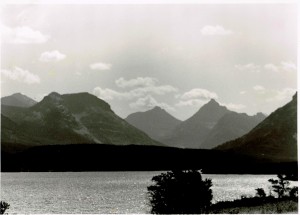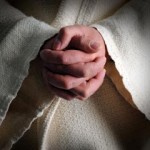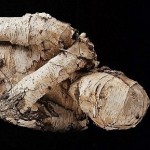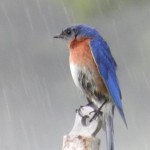
Journeys—Mary and Joseph’s, the wise men, Jesus’ cousin John, and Jesus himself. In the past few weeks everybody we read about in the Bible is on a journey following a path—and probably prayed to remain watchful on a course laden with misdirection.
I was 28 in 1982. This picture was taken while we waited at the ranger station for a canoe portage permit into the backwoods of Massasauga Provincial Park, Ontario, Canada.

All of my vacations in the late 70s and early 80s were spent in the wilderness backpacking through the Rocky Mountain range or on portages in southeastern Canada.
The remote trails, the challenges of the deep woods, the raw beauty of nature and geological formations were what drew me. The views often reduced me to silent wonder—well that and the shortness of breath from climbing.
When travelling within an area that required a backwoods permit, you understood that the path you were about to take would not be a casual stroll along a groomed trail. The rangers would question you and your companions about your knowledge of wilderness protocol and emergency procedures, and set your check-in date. If you were not at the designated ranger station within 48 hours of that time, a very-expensive-if-you-were-not-dead search party would be sent.
We were aware that we would be embarking on a journey that demanded watchfulness. The paths were rarely level. Runoffs were rapid and deafening. Rocky outcroppings often concealed the trail’s next entry point. Miss the mark and you were lost.
The dangers were not to be taken lightly. Protocol in bear and lion country began with women hikers kept off trail during menses. Backpacks were hung from ten-foot limbs, and meals were never eaten near a campsite. Precautions against danger were essential. The full responsibility of personal safety was all yours. Make a mistake and it could be a week before you were found. There were no cells phones back then, and a “dead zone” had a whole different meaning.
We were always attentive along those narrow trails. To hike the backwoods was to see beyond the glorious view. It was to watch for patterns, to observe changes, to see abundant beauty with its shadowed threat.
When we journey we are open for wonderment. But the fullness of the experience is gained in learning from where the wonderment comes. There is more to walking a path than simply observing its beauty.
The journey of faith is much the same. It is not just about the beauty of the symbols and sacraments. It is a path of knowledge and the wisdom to recognize danger. It is to know when a path is turning in a direction that takes us away from safety, and to avoid missing the mark.
We know the summit to which the Holy story leads. May we always be attentive, and pray to recognize what direction leads us home.











